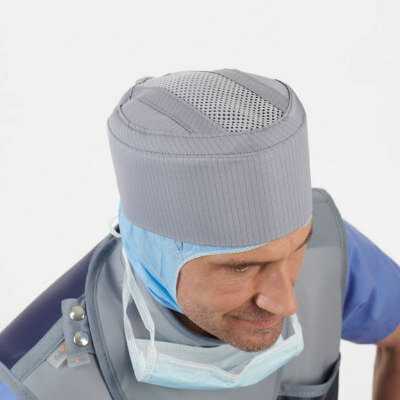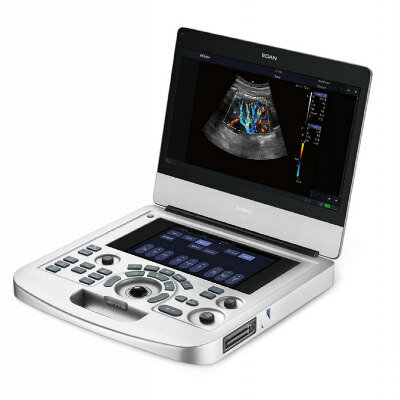AI Algorithm Outperforms Radiologists in Measuring Cancer Spread on CT Scans
|
By MedImaging International staff writers Posted on 24 Oct 2022 |

Head and neck cancers and their standard treatments - surgery, radiation, or chemotherapy - carry significant morbidity. They affect how a person looks, talks, eats, or breathes. Therefore, there is great interest in developing less intense treatment strategies for patients. Among the factors that determine the cancer stage are the size of the original tumor, the number of lymph nodes involved, and extranodal extension - when malignant cells spread beyond the borders of the neck lymph nodes into the surrounding tissue. Now, new research has demonstrated that artificial intelligence (AI) can augment current methods to predict the risk that head and neck cancer will spread outside the borders of neck lymph nodes.
In a study by researchers with the ECOG-ACRIN Cancer Research Group (ECOG-ACRIN, Philadelphia, PA, USA), a customized deep learning algorithm using standard computed tomography (CT) scan images and associated data contributed by patients who participated in the E3311 phase 2 trial showed promise, especially for patients with a new diagnosis of human papillomavirus (HPV)-related head and neck cancer. The E3311 validated dataset carries the potential to contribute to the more accurate staging of disease and prediction of risk. The completed E3311 phase 2 trial showed that low-dose radiation at 50 Gray (Gy) without chemotherapy following transoral surgery led to very high survival and outstanding quality of life in patients at medium risk for recurrence.
The researchers developed and validated a neural network-based deep learning algorithm based on diagnostic CT scans, pathology, and clinical data. The source was the cohort of participants in the E3311 trial who were assessed at high risk of recurrence by standard pathologic and clinical measures. In E3311, patients were assessed as high risk if there was ≥1 mm extranodal extension (ENE). These patients were assigned to chemotherapy and high-dose radiation (66 Gy) following transoral surgery.
The researchers obtained pre-treatment CT scans and corresponding surgical pathology reports from the E3311 high-risk cohort, as available. From 177 collected scans, 311 nodes were annotated: 71 (23%) with ENE and 39 (13%) with ≥1 mm ENE. The tool showed high performance in predicting ENE, substantially outperforming the reviews by expert head and neck radiologists. The team now plans to evaluate the dataset as part of future treatment trials for head and neck cancer. The algorithm will be assessed for its potential to improve upon current disease staging and risk assessment methods.
“The deep learning algorithm accurately classified 85% of the nodes as having ENE compared to 70% by the radiologists,” said Benjamin Kann, MD, who led the study for ECOG-ACRIN. “As to specificity and sensitivity, the deep learning algorithm was 78% accurate versus 62% by the radiologists.”
"Our ability to develop biomarkers from standard CT scan images is an exciting new area of clinical research and provides the hope that we will be able to better tailor treatment for individual patients, including deciding when to best use surgery and in whom to reduce the extent of treatment," added senior author Barbara A. Burtness, MD.
Related Links:
ECOG-ACRIN
Latest General/Advanced Imaging News
- New AI Method Captures Uncertainty in Medical Images
- CT Coronary Angiography Reduces Need for Invasive Tests to Diagnose Coronary Artery Disease
- Novel Blood Test Could Reduce Need for PET Imaging of Patients with Alzheimer’s
- CT-Based Deep Learning Algorithm Accurately Differentiates Benign From Malignant Vertebral Fractures
- Minimally Invasive Procedure Could Help Patients Avoid Thyroid Surgery
- Self-Driving Mobile C-Arm Reduces Imaging Time during Surgery
- AR Application Turns Medical Scans Into Holograms for Assistance in Surgical Planning
- Imaging Technology Provides Ground-Breaking New Approach for Diagnosing and Treating Bowel Cancer
- CT Coronary Calcium Scoring Predicts Heart Attacks and Strokes
- AI Model Detects 90% of Lymphatic Cancer Cases from PET and CT Images
- Breakthrough Technology Revolutionizes Breast Imaging
- State-Of-The-Art System Enhances Accuracy of Image-Guided Diagnostic and Interventional Procedures
- Catheter-Based Device with New Cardiovascular Imaging Approach Offers Unprecedented View of Dangerous Plaques
- AI Model Draws Maps to Accurately Identify Tumors and Diseases in Medical Images
- AI-Enabled CT System Provides More Accurate and Reliable Imaging Results
- Routine Chest CT Exams Can Identify Patients at Risk for Cardiovascular Disease
Channels
Radiography
view channel
Novel Breast Imaging System Proves As Effective As Mammography
Breast cancer remains the most frequently diagnosed cancer among women. It is projected that one in eight women will be diagnosed with breast cancer during her lifetime, and one in 42 women who turn 50... Read more
AI Assistance Improves Breast-Cancer Screening by Reducing False Positives
Radiologists typically detect one case of cancer for every 200 mammograms reviewed. However, these evaluations often result in false positives, leading to unnecessary patient recalls for additional testing,... Read moreMRI
view channel
PET/MRI Improves Diagnostic Accuracy for Prostate Cancer Patients
The Prostate Imaging Reporting and Data System (PI-RADS) is a five-point scale to assess potential prostate cancer in MR images. PI-RADS category 3 which offers an unclear suggestion of clinically significant... Read more
Next Generation MR-Guided Focused Ultrasound Ushers In Future of Incisionless Neurosurgery
Essential tremor, often called familial, idiopathic, or benign tremor, leads to uncontrollable shaking that significantly affects a person’s life. When traditional medications do not alleviate symptoms,... Read more
Two-Part MRI Scan Detects Prostate Cancer More Quickly without Compromising Diagnostic Quality
Prostate cancer ranks as the most prevalent cancer among men. Over the last decade, the introduction of MRI scans has significantly transformed the diagnosis process, marking the most substantial advancement... Read moreUltrasound
view channel
Deep Learning Advances Super-Resolution Ultrasound Imaging
Ultrasound localization microscopy (ULM) is an advanced imaging technique that offers high-resolution visualization of microvascular structures. It employs microbubbles, FDA-approved contrast agents, injected... Read more
Novel Ultrasound-Launched Targeted Nanoparticle Eliminates Biofilm and Bacterial Infection
Biofilms, formed by bacteria aggregating into dense communities for protection against harsh environmental conditions, are a significant contributor to various infectious diseases. Biofilms frequently... Read moreNuclear Medicine
view channel
New SPECT/CT Technique Could Change Imaging Practices and Increase Patient Access
The development of lead-212 (212Pb)-PSMA–based targeted alpha therapy (TAT) is garnering significant interest in treating patients with metastatic castration-resistant prostate cancer. The imaging of 212Pb,... Read moreNew Radiotheranostic System Detects and Treats Ovarian Cancer Noninvasively
Ovarian cancer is the most lethal gynecological cancer, with less than a 30% five-year survival rate for those diagnosed in late stages. Despite surgery and platinum-based chemotherapy being the standard... Read more
AI System Automatically and Reliably Detects Cardiac Amyloidosis Using Scintigraphy Imaging
Cardiac amyloidosis, a condition characterized by the buildup of abnormal protein deposits (amyloids) in the heart muscle, severely affects heart function and can lead to heart failure or death without... Read moreImaging IT
view channel
New Google Cloud Medical Imaging Suite Makes Imaging Healthcare Data More Accessible
Medical imaging is a critical tool used to diagnose patients, and there are billions of medical images scanned globally each year. Imaging data accounts for about 90% of all healthcare data1 and, until... Read more
Global AI in Medical Diagnostics Market to Be Driven by Demand for Image Recognition in Radiology
The global artificial intelligence (AI) in medical diagnostics market is expanding with early disease detection being one of its key applications and image recognition becoming a compelling consumer proposition... Read moreIndustry News
view channel
Bayer and Google Partner on New AI Product for Radiologists
Medical imaging data comprises around 90% of all healthcare data, and it is a highly complex and rich clinical data modality and serves as a vital tool for diagnosing patients. Each year, billions of medical... Read more





















